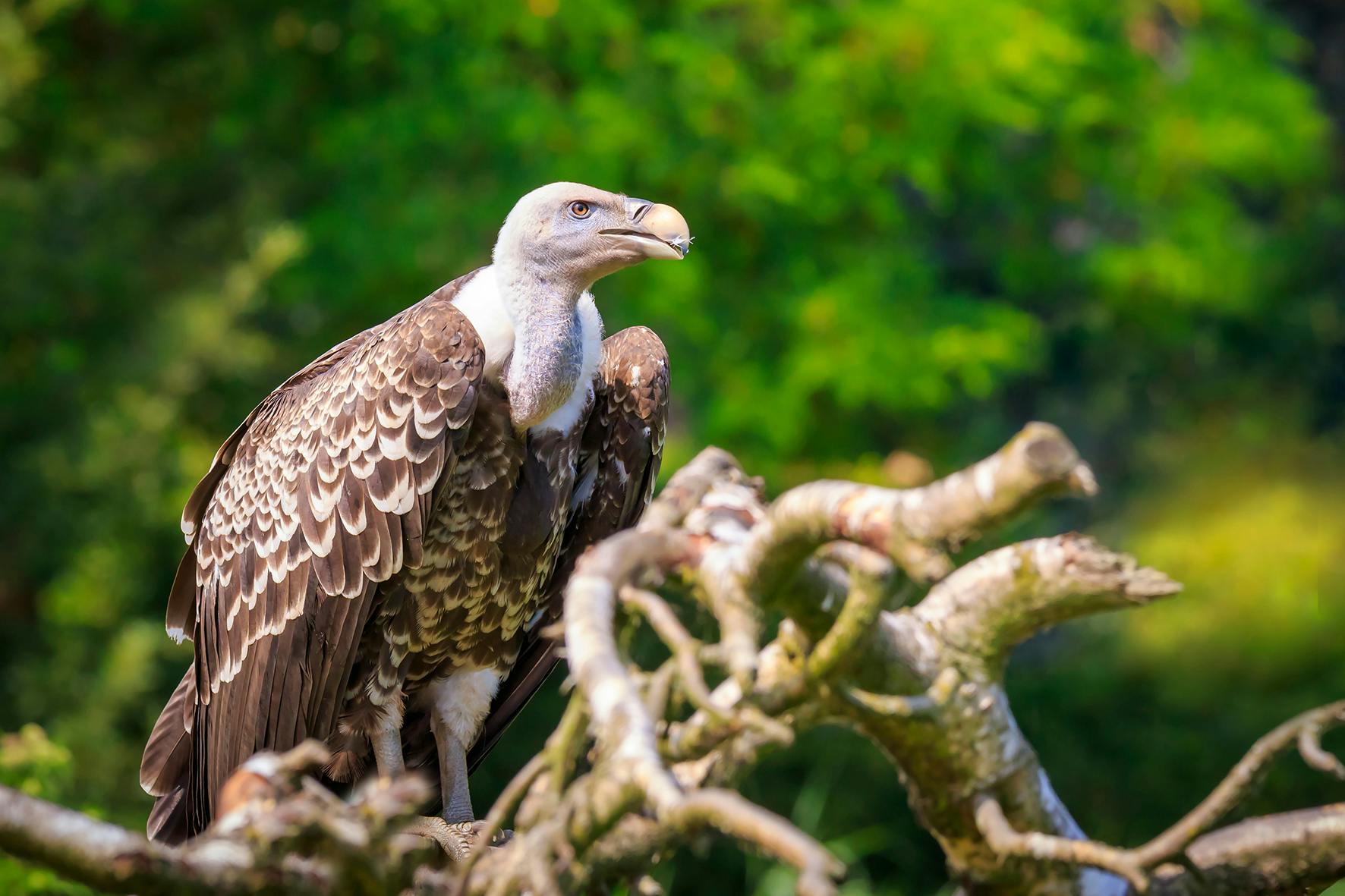Rüppell's griffon vulture




Rüppell's griffon vultures soar at great heights over the African plains, scanning for carcasses to feast on. In doing so, they play a crucial role in their habitat by keeping the savanna clean. This helps prevent the spread of diseases, which can also be dangerous to humans. Additionally, they ensure that the nutrients from the carcasses are returned to the soil. Unfortunately, vultures in Africa are facing significant challenges. As the coordinator of the European population management program for Rüppell's Griffon Vulture, Diergaarde Blijdorp is dedicated to the protection of African vultures.

40 years
Wingspan: 2.3 - 2.5 meters
Length: ± 1 meters
6,4 – 8 kilograms

Vultures are skilled at locating carcasses, therefore they are also drawn to the poached rhinoceroses and elephants. Vultures circling above a carcass can inadvertently reveal the poachers' location to rangers. This is why poachers pour poison over the carcasses they kill. The vultures that are attracted to these poisoned carcasses die in large numbers, allowing the poachers to operate unnoticed. Due to factors like this, 7 out of the 11 African vulture species are currently severely threatened, including the rüppell's griffon vulture.

Diergaarde Blijdorp supports the Peregrine Fund, an organization dedicated to the worldwide conservation of raptors. They oversee teams in Africa that clean up poisoned carcasses and work to raise awareness among the local population about the crucial role of vultures. Additionally, they employ GPS transmitters to track Rüppell's Griffon Vultures. If a transmitter remains suspiciously still for an extended period, a team springs into action to investigate the fate of the vulture. They can then remove the poisoned carcass as quickly as possible, preventing further vulture deaths due to poisoning.
Rüppell's Griffon Vultures are found in Africa, primarily in the area around the equator. Their habitat stretches from the west coast of Senegal to the east coast of Somalia and Tanzania. They are also increasingly spotted in Spain or Portugal. They primarily fly over vast savannas and steppes but also require rocks and cliffs for nesting.
...The vulture is a scavenger and actually serves as the recycling center of the savannah?

Rüppell's Griffon Vultures only lay one egg per year. The likelihood of this egg successfully hatching and the chick growing up is very low. To lend a helping hand, Blijdorp employs a trick based on a natural mechanism of the vultures. When a vulture lays an egg, the caregivers remove it and place it in an incubator. In response, the vulture lays a second egg after four weeks. The first egg hatches in the incubator, and the chick is reintroduced to the parents by the caregivers. At that point, the second egg is taken away and further incubated in the machine. This second chick is then placed with adoptive parents, which fortunately is quite a straightforward process. This way, twice as many vultures can be raised..
Just like in the wild, the Rüppell's vultures in Blijdorp share their habitat with other scavengers, including three other species of vultures and the African marabous. The vultures are provided with carcasses to offer them a diet as natural as possible. The nest boxes at the back of the aviary provide the Rüppell's vultures with a sheltered spot in the winter and a good breeding place. This has proven to be very successful: several Rüppell's vultures have hatched from eggs in Blijdorp.